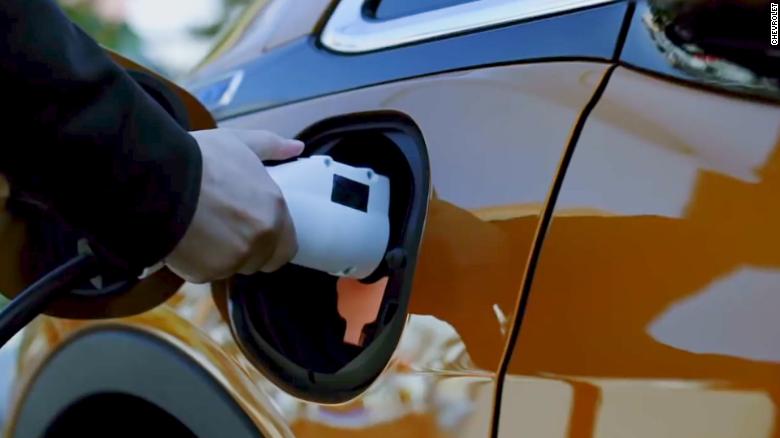Charging your electric car will soon become faster and more convenient

Gas stations are everywhere. A typical highway exit might have several of them, each with banks of pumps at the ready. And the process is fast: Filling the tank takes just a few minutes. There’s rarely any need to plan fueling stops ahead of time. When the tank is running low, it’s just a matter of pulling off at the next exit, filling the tank, and getting back on the highway. Snacks, drinks and restrooms are usually available there, too. But there are far fewer electric car fast chargers along the highway. Also, despite advances in charger and battery technologies, it still takes much longer — typically about 30 minutes with today’s fast chargers — to recharge a battery than to pump liquid into a tank. (That time will go down a lot in the future, but not for all cars or at all chargers.) To make matters worse, EV fast chargers often aren’t located near convenience stores or restaurants. So, while drivers have longer to wait, there’s not much to do but sit in the car while it recharges. While some are located along highways that have rest stops, others are often in shopping center parking lots, a long walk from the stores, or at car dealerships or hotels at which you might not be staying.
If you build it, they will buyElectric cars don’t need fast chargers all the time, of course. The vast majority of the time, electric cars are charged at home or at work, using chargers that can take six to eight hours. Fast chargers are different. They are designed to quickly fill a car’s battery — not all the way, which would stress the battery, but usually up to about 80% — so people can get back on their way.Fast chargers are usually only needed when people want to go on long drives. These chargers are important, though, because people considering buying an electric car need to have confidence they can take the occasional road trip.There are a handful of companies and organizations looking to address that problem. Several have announced partnerships and initiatives to build big networks of EV fast chargers. Some, like EVgo and Tesla, already have fairly extensive networks.How much customers pay to charge their cars — and how they pay — vary. Customers can be charged by the minute, by the kilowatt-hour, or they can pay a flat rate per month. Different companies have “interoperability” agreements with one another so someone who has an account with say, Chargepoint, might be able to use chargers operated by Greenlots and vice versa. From a business perspective, the chargers by themselves aren’t always the point. Parking garages, stores and restaurants often install electric car chargers as a way to attract customers. The company that runs the charger will usually charge some sort of fee. For a company like Tesla, chargers are also a major selling point for the company’s cars. Tesla executives have frequently said its Supercharger network is not intended as a profit center for the company and the money charged, about 28 cents per kilowatt hour, is just to cover costs. On a recent road trip in a Tesla Model S Long Range, it cost about $20 to charge the car to 80% at a Supercharger. Tesla currently has about 1,600 Supercharger stations globally.Volkswagen provides the financing behind Electrify America, which is working on one of the largest charging networks in the US. That money is being provided thanks to a settlement VW reached with US regulators over the automaker’s diesel emissions scandal. VW is also planning one of the largest roll outs of all-electric models in the coming years, but Electrify America is specifically forbidden from using its charger network or marketing to benefit Volkswagen. Electrify America is operated as an entirely separate company and executives insist the company will, on its own, make a profit from people using its charging stations. Electrify America expects to have about 500 fast chargers in the US by the end of the year.General Motors and the construction company Bechtel are also in the early stages of teaming up on a proposed charging network. It will be available for use by a variety of electric cars, not just GM’s. But it should also help GM in its efforts to sell its electric cars.”You’re hoping that you place [the chargers] in the right place, and that as the number of vehicles increases, that you’re able to get your utilization to a high enough level where you can start making some money off of them,” said Ben Kellison, a consultant with the firm Wood Mackenzie.But not everyone is looking for those high traffic routes. Duke Energy, an energy provider in the Southeast United States, has begun installing chargers along less-traveled areas, starting with rural areas in northern Florida, where the company will be installing 50 fast charging stations this year. Ultimately, Duke wants to spur broader adoption of electric cars among its home and business electricity customers.Duke’s chargers will be there to give drivers the confidence that they can go anywhere — not just between big cities. If the chargers are rarely used, that’s fine, explained Lang Reynolds, director of electric transportation at Duke Energy. The cars will mostly plug into the power grid at home at night, leading to more efficient use of Duke’s electricity generating capacity.Royal Dutch Shell has recently acquired two different electric vehicle charging companies, the European EV charging company NewMotion and GreenLots, a US company that provides software for running EV charging networks. Among other things, these acquisitions provide another service Shell gas stations can offer customers even as they switch away from gasoline-powered cars.And this isn’t just happening in the US. In China, BP recently announced a partnership with the ride hailing service Didi to install a network of car charging stations there. BP is already rolling out charging stations in its home market, the United Kingdom. Challenges for charging stationsInstalling a fast charging station isn’t always simple. This is the main reason GM teamed up with Bechtel, a company that has experience working with utilities and local governments on infrastructure projects. For one thing, there are regulatory and permitting issues. Then there’s the need to coordinate with local utilities to make sure a charging station can get all the power it needs. And all of this, of course, varies from one state — and even one city — to another. The chargers themselves aren’t simple, either. While gasoline pump nozzles come in a standard size, there are different types of electric car chargers. For instance, Tesla has its own proprietary charging network and its own chargers, which it calls Superchargers. Tesla cars require a special adapter to charge from other chargers, most of which use either the CCS or CHAdeMO standard, each of which is different from the other. And that also raises the challenges of counting how many chargers there actually are. Is one charger with two different types of charger cords a single charger or is it two chargers?
There are about 13,000 electric vehicle fast charging stations in the United States, according to data from the US Department of Energy. That compares to roughly 332,000 gas stations. There will likely never be as many fast chargers as there are gas stations, said Pat Romano, CEO of ChargePoint, a company that operates software networks for chargers internationally. That’s because, most electric vehicle charging will be done at home or at work and most electric cars have navigation systems that will guide them to the chargers. Drivers won’t be coming across them haphazardly the way they typically find gas stations. That lessens the need to place them anywhere they might conceivably be needed.There’s a lot of experimentation still going on with how best to place fast chargers, whether for maximum use, convenience for the few, or as a way to attract customers for businesses, said Wood Mackenzie’s Kellison. And the best way to make money from them is also a question.”Anybody who’s saying 10 to 15 years from now they know exactly how this is going to run is talking a little too early to have a good idea of how it will shake out,” he said.







